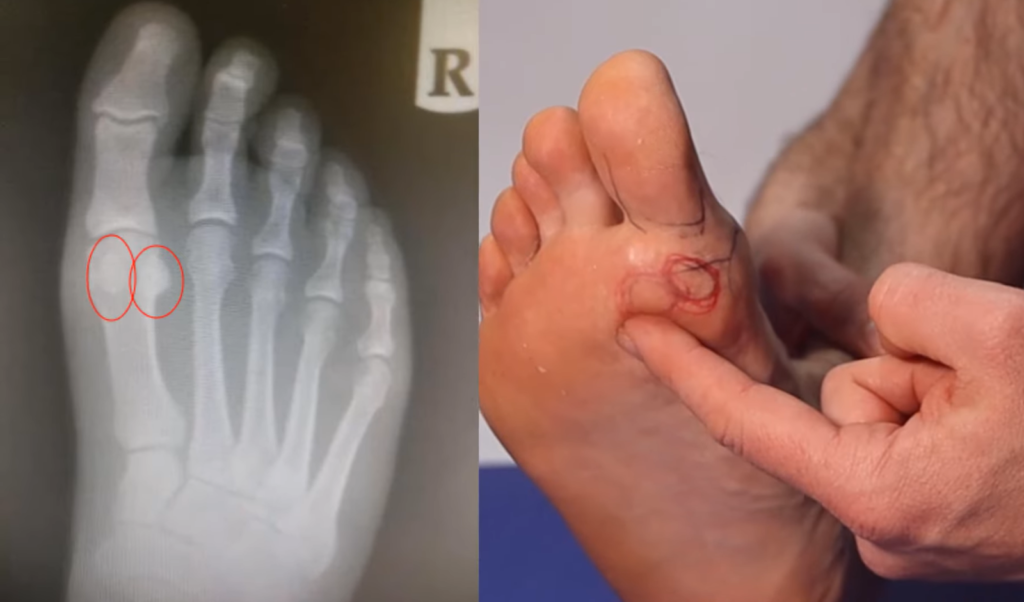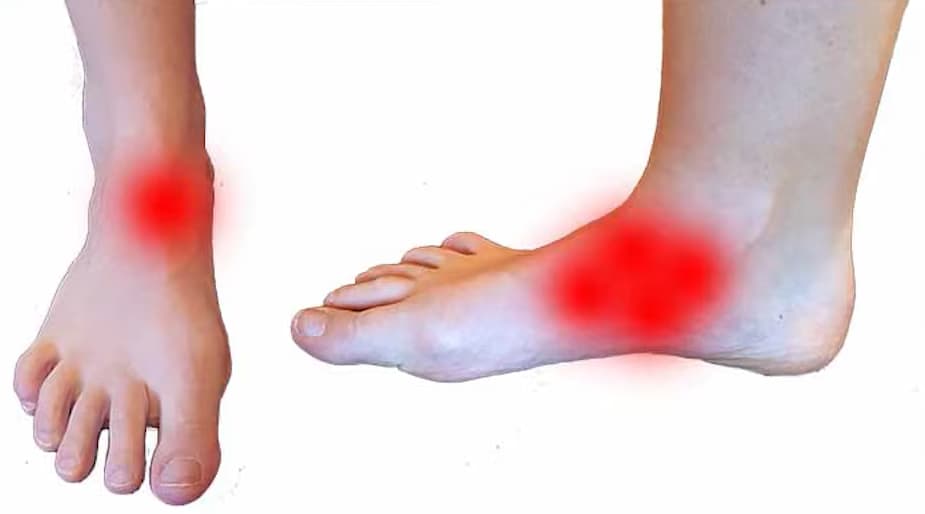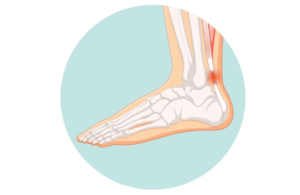Understanding Stress Fractures
Stress fractures represent tiny, gradually developing fissures within the bone structure, which are essentially micro-breaks caused by repetitive strain or overexertion that disrupts the natural bone regeneration process. These types of injuries are particularly common among individuals engaged in high-impact athletic activities, such as soccer, basketball, or athletics, which involve consistent running and jumping.
It’s crucial to understand the difference between stress fractures and acute fractures. Acute fractures occur abruptly, usually as a result of a one-time impact where the bone is exposed to a force beyond its capacity, resulting in an immediate split or fracture. These types of breaks are frequently seen in situations involving sports injuries, significant falls, or vehicular collisions.
On the other hand, stress fractures develop slowly and are not associated with a single, identifiable incident of damage. They typically occur in the feet and lower legs, areas that endure considerable stress from everyday activities and exercises.
While top foot stress fractures may cause discomfort, it’s essential to understand how pregnancy can also contribute to foot pain, prompting a discussion on when these symptoms typically begin.
Typical Locations for Stress Fractures and Their Implications

Stress fractures can affect various bones, particularly in areas subjected to repetitive stress. Among the most frequent sites are:
- Sesamoid Bones: These small bones are located beneath the joint of the big toe;
- Metatarsal Bones: Especially the head and shaft of the second metatarsal, situated under the ball of the foot.
There are also less common but critical sites where stress fractures can have serious consequences due to the high risk of non-healing, known as nonunion:
- Navicular Bone: Found on the top of the midfoot, just above the arch;
- Fifth Metatarsal: The outer long bone of the foot, extending to the little toe;
- Calcaneus: The heel bone, which bears much of the body’s weight while walking or running.
Attention to these areas is crucial as stress fractures here can lead to prolonged discomfort and may require more complex treatment strategies to ensure proper healing.
Contributing Factors to Stress Fractures
Several factors contribute to the occurrence of stress fractures, including:
- Intense and abnormal pressure resulting from weight-bearing activities such as running, jumping, or dancing;
- Impact or landing on rigid surfaces from elevated heights;
- Abrupt escalation in the duration and intensity of an exercise regimen;
- Weakness in the muscles of the lower legs and feet;
- Limited range of motion and flexibility in joints, leading to increased stress on bones;
- Conditions like osteoporosis that reduce bone density;
- Use of prescription medications that diminish bone density;
- Inadequate footwear lacking sufficient shock absorption or worn-out soles;
- Deficiencies in vitamin D and calcium, which compromise bone strength.
Signs and Symptoms of Stress Fractures

The primary indicator of a stress fracture is typically pain in the foot or ankle. Additional symptoms associated with this condition may include:
- Localized pain, swelling, and tenderness directly over the affected bone;
- The pain may vary in intensity, ranging from dull to sharp, and may occur intermittently;
- Discomfort might be experienced during nighttime hours;
- Pain exacerbates with high-impact activities such as running, hopping, or jumping;
- Difficulty bearing weight on the affected limb.
Initially, the discomfort might manifest as a mild ache in the foot or ankle, intensifying during physical exertion and easing during periods of rest. Often, individuals tend to disregard this discomfort until it becomes more severe, causing considerable distress.
Identifying Stress Fractures
Diagnosing a stress fracture involves evaluating the individual’s signs, symptoms, and injury history, along with conducting a physical examination. Suspected cases may necessitate referral for X-ray imaging or, in certain instances, an MRI to confirm the diagnosis.
Treatment Options for Stress Fractures
If you’re exhibiting symptoms of a stress fracture, it’s crucial to consult podiatrists promptly to initiate a treatment regimen. Early intervention can significantly reduce recovery time. Stress fractures typically result from a combination of factors, necessitating a tailored approach to treatment for optimal and expedited recovery, enabling you to resume your regular activities swiftly.
Treatment may involve:
- RICE Protocol: Rest, ice, compression, and elevation;
- Adjustment of Training Program: Modify activities to prevent further injury;
- Low-Impact Activities: Engage in activities like swimming or biking during the healing process;
- Supportive Footwear: Utilize shoes with cushioning soles to reduce stress on the affected area;
- Custom Foot Orthotics: Address biomechanical issues contributing to the fracture and alleviate pressure on the affected site;
- Anti-inflammatory Medication: To manage pain and inflammation;
- Exercise Regimen: Incorporate strengthening, stretching exercises, dry needling, and foot mobilization techniques to prepare muscles for regular activity;
- Moon Boot: Depending on severity and location, a moon boot may be necessary for immobilization.
While most stress fractures respond well to non-surgical treatment, severe cases may require surgical intervention, such as the insertion of pins, screws, or plates, to facilitate bone healing and stability.
Bone Injury Neglect: Risks & Prevention
Ignoring bone injuries can lead to severe consequences, including the progression of microfractures into complete bone breaks. Without proper attention, the area of the fracture may fail to heal correctly, leading to the potential death of bone fragments due to avascular necrosis. This condition might necessitate surgical procedures over less invasive treatments.
Prevention Strategies
To mitigate the risk of developing stress fractures, consider the following preventive strategies:
- Optimize your gait and running mechanics to ensure maximum efficiency and minimal stress on your skeletal system;
- Choose footwear that offers sufficient cushioning and supports the arch of the foot to prevent undue strain;
- Regularly replace your running shoes to ensure continuous shock absorption, as worn-out shoes lose their protective qualities;
- Consume a balanced diet enriched with calcium and vitamin D to fortify bone density and strength;
- Gradually increase the intensity and duration of your training regimen to avoid sudden stress on your bones;
- Diversify your physical activities to evenly distribute physical stress and avoid overburdening specific body parts.
Conclusion
Stress fractures frequently occur in individuals who participate in activities involving significant impact, like running or leaping. Identifying and addressing these fractures early on is vital to avert additional health issues. Engaging in consistent physical activity, wearing appropriate shoes, and maintaining a diet abundant in calcium and Vitamin D are fundamental preventative measures. Should you suspect the presence of a stress fracture, seeking the advice of a medical expert for a precise evaluation and appropriate care is crucial.
FAQs
The ability to walk with a stress fracture varies with each case. Foot specialists can determine whether walking is safe for you or if you may require a moon boot or specialized orthotic support.
Healing times for stress fractures range from six to eight weeks, provided that the patient adheres to the treatment plan advised by their healthcare provider.
The quickest recovery from a stress fracture involves a combination of adequate rest, adherence to your foot doctor’s treatment strategy, and maintaining a balanced diet rich in essential nutrients. For a swifter recovery, it’s recommended to stop smoking and limit alcohol intake.


